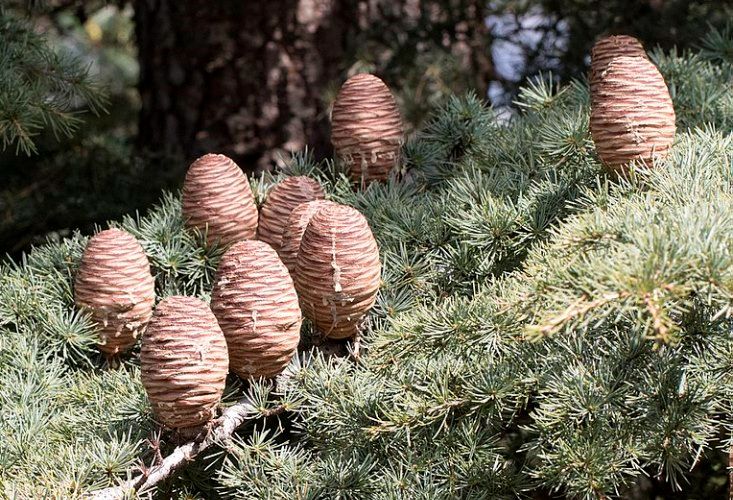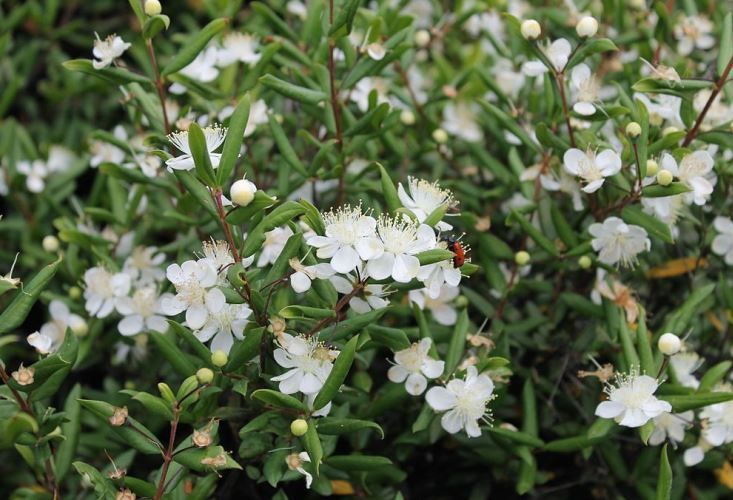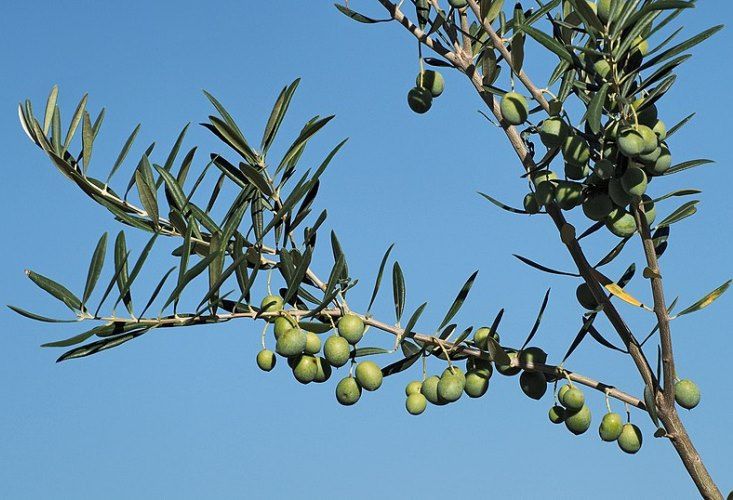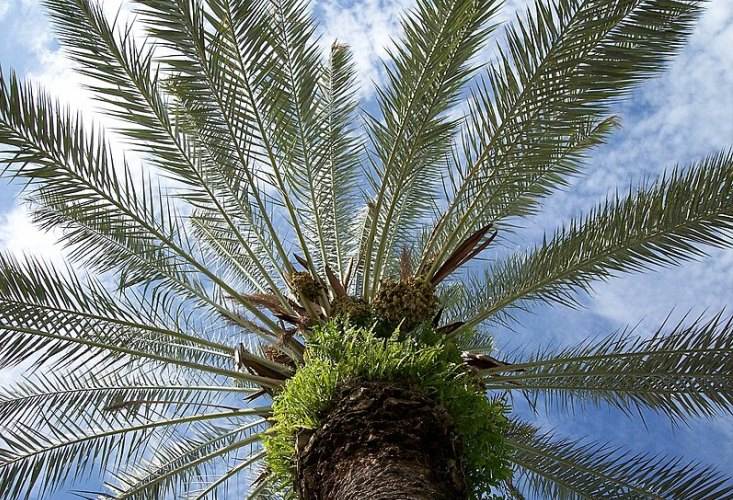 Edit article
Edit articleSeries
Five Alternatives to the Etrog

A Sukkah adorned with olive, myrtle, and palm branches, with a table laden with fruit.
The Sukkot practice of waving the “four species,” which includes the etrog, also known as the citron or Citrus Medica, is derived from the Torah:
ויקרא כג:מ וּלְקַחְתֶּם לָכֶם בַּיּוֹם הָרִאשׁוֹן פְּרִי עֵץ הָדָר כַּפֹּת תְּמָרִים וַעֲנַף עֵץ עָבֹת וְעַרְבֵי נָחַל וּשְׂמַחְתֶּם לִפְנֵי יְ־הוָה אֱלֹהֵיכֶם שִׁבְעַת יָמִים.
Lev 23:40 On the first day [of Sukkot] you shall take fruit of trees of beauty, branches of palm trees, boughs of leafy trees, and willows of the brook, and you shall be happy before YHWH your God for seven days.
The identification of פְּרִי עֵץ הָדָר (peri ʿetz hadar) as the etrog dates to the Second Temple period.[1] But is the etrog the only beautiful fruit? Here are five alternative interpretations.
1. Himalayan Cedar Cones

Samuel Tolkowsky (1886–1965) was a founding father of etrog research. He argued that during the biblical period the etrog had not yet reached Israel from its native home in Asia, which led him to reexamine the word הָדָר, “beauty,” in light of Sanskrit. Tolkowsky concluded that the ha in ha-dar (ה-דר) is the Hebrew definite article, “the,” and dar is a Sanskrit loanword meaning “tree,” or more specifically the “cedar tree”:
Peri ets hadar thus means literally “the fruit of the cedar-tree,” otherwise, the cedar-cone.[2]

Almost eighty years later, Shemer Arieli agreed with Tolkowsky’s identification[3] but offered a different etymology based on the Akkadian word, דר, dār, which means “eternity.” The peri ʿetz ha-dar, “fruit of the tree of eternity,” is the cone of the cedar tree, an object that was venerated in the Neo-Assyrian Empire.
Each of these different etymologies suggests that the Torah instructs the people of Israel to celebrate Sukkot with the Himalayan cedar cone, that is, a holy “fruit” from the east.[4]
2. Myrtle Branches

Arnold B. Ehrlich (1848–1919), a scholar known for his emendations of the biblical text, writes: “I presume that the text [of Leviticus 23:40] originally was hadas, myrtle.”[5] In other words, Ehrlich emends the Hebrew הָדָר (hadar), “beauty,” to הֲדַס (hadas), “myrtle,” aligning Leviticus with the description of Sukkot in Nehemiah:
נחמיה ח:יד וַיִּמְצְאוּ כָּתוּב בַּתּוֹרָה אֲשֶׁר צִוָּה יְ־הוָה בְּיַד מֹשֶׁה אֲשֶׁר יֵשְׁבוּ בְנֵי יִשְׂרָאֵל בַּסֻּכּוֹת בֶּחָג בַּחֹדֶשׁ הַשְּׁבִיעִי. ח:טו וַאֲשֶׁר יַשְׁמִיעוּ וְיַעֲבִירוּ קוֹל בְּכָל עָרֵיהֶם וּבִירוּשָׁלִַם לֵאמֹר צְאוּ הָהָר וְהָבִיאוּ עֲלֵי זַיִת וַעֲלֵי עֵץ שֶׁמֶן וַעֲלֵי הֲדַס וַעֲלֵי תְמָרִים וַעֲלֵי עֵץ עָבֹת לַעֲשֹׂת סֻכֹּת כַּכָּתוּב.
Neh 8:14 And they found it written in the Torah, which the Lord had commanded by the hand of Moses, that the people of Israel should live in sukkot during the festival of the seventh month 8:15 and that they should announce and proclaim in all their towns and in Jerusalem as follows, “Go out to the hills and bring leaves of olive trees, leaves of oil trees, leaves of myrtle, leaves of palm trees, and branches of leafy trees to make sukkot, as it is written.”
What about the פְּרִי, “fruit,” of Leviticus 23:40? Would tiny myrtle berries suffice? For Ehrlich and his predecessors such as the Karaite Aaron ben Elijah (14th century), פְּרִי is to be interpreted as פֹּארוֹת (poʾrot), “branches.” God desires a celebration with sukkot (huts) made of myrtle and other types of branches. Fruit is not an important part of the holiday.[6]
3. Olives on the Branch

Nehemiah 8:15 also mentions עֲלֵי זַיִת (ʿalei zayit), “leaves of olive trees,” a phrase that is absent in Leviticus. In 1972, while discussing Leviticus 23:40, Irving Kollar highlighted the significance of the olive tree in the Bible. For example, it is the first, and therefore most important tree mentioned in Jotham’s parable about kingship:
שׁפטים ט:ח הָלוֹךְ הָלְכוּ הָעֵצִים לִמְשֹׁחַ עֲלֵיהֶם מֶלֶךְ וַיֹּאמְרוּ לַזַּיִת מָלְוכָה עָלֵינוּ. ט:ט וַיֹּאמֶר לָהֶם הַזַּיִת הֶחֳדַלְתִּי אֶת דִּשְׁנִי אֲשֶׁר בִּי יְכַבְּדוּ אֱלֹהִים וַאֲנָשִׁים וְהָלַכְתִּי לָנוּעַ עַל הָעֵצִים.
Judg 9:8 “Once the trees went to anoint a king over themselves. They said to the olive tree, ‘Reign over us.’ 9:9 But the olive tree replied, ‘Have I, through whom God and men are honored, stopped yielding my rich oil, that I should go and wave above the trees?’”
Hosea also describes the olive as majestic:
הושׁע יד:ז יֵלְכוּ יֹנְקוֹתָיו וִיהִי כַזַּיִת הוֹדוֹ וְרֵיחַ לוֹ כַּלְּבָנוֹן.
Hos 14:7 [Israel’s] boughs shall spread out far, his splendor shall be like that of the olive tree, his fragrance like that of Lebanon.
The word הוֹד, hod, “splendor” is a synonym of הָדָר, and the two often appear side by side.[7] This and other observations led Kollar to conclude: “the tree called ‘hadar’ is the olive tree.”[8] Thus, according to Leviticus and Nehemiah, Sukkot is meant to be celebrated in huts made with olives on their branches.
4. Date Palm Fronds

In 1989, Yitzchak Avishur rearranged the syntax of the first two items in the list of Leviticus 23:40 so that הָדָר is not the final element in the phrase פְּרִי עֵץ הָדָר, but instead begins the next item:
ויקרא כג:מ ...פְּרִי עֵץ, הֲדַר כַּפֹּת תְּמָרִים....
Lev 23:40 …branches of trees, beauty of palm fronds….[9]
Avishur also interpreted the word פְּרִי not as “fruit,” but as “branches” or “foliage.” What emerges is that Leviticus calls for three, not four, “species”—palm fronds, leafy branches, and willows—and singles out palm fronds for their beauty. Fruit plays no role in this celebration of Sukkot.[10]
5. Grapes, dates, figs, pomegranates, and olives

Despite the antiquity of the etrog tradition, and the four interpretations presented above, I propose that פְּרִי עֵץ הָדָר originally served as a general expression for fruit:
In my view, peri ʿeṣ hadar means “choice tree-fruits,” that is, “tree-fruits” (פרי עץ) that are “beautiful” (הדר). For the Israelite farmer, this would have been the freshly picked grapes, figs, dates, olives, and pomegranates of the Sukkot fruit harvest.[11]
Sukkot marks the end of the long and dry harvest season. The festival is referred to in Exodus as חַג הָאָסִף “the feast of ingathering” (Exod 23:16; 34:22), and Leviticus notes that it is celebrated בְּאָסְפְּכֶם אֶת תְּבוּאַת הָאָרֶץ, “when you gather in the produce of your land” (Lev 23:39). Since the barley crop was already harvested at Passover and the wheat crop was already harvested at Shavuot, all that was left for the farmer to collect was the פְּרִי עֵץ, “tree-fruit,” that is, the grapes, dates, figs, pomegranates, and olives that were ripe around Sukkot time.
These fruits would have been eaten and enjoyed in the sukkot, which were made of the leafy branches described in Leviticus 23:40 and Nehemiah 8:15.[12] In this fashion, the harvest would have been celebrated in the fields by enjoying the harvest itself.
The closest match to my interpretation in contemporary practice is that of the Samaritans. Benyamim Tsedaka interprets פְּרִי עֵץ הָדָר as “any nice fruit.”[13] Fruits of all shapes and sizes are set in a geometric pattern to create the sukkah’s roof. The major difference between my approach and that of the Samaritans is that in my opinion the פְּרִי עֵץ הָדָר would have been eaten inside the sukkah as opposed to being part of the sukkah itself.
The Beauty of פְּרִי עֵץ הָדָר
More than two thousand years of tradition has canonized the etrog as the beautiful fruit of Sukkot. While I am excited to take part in this tradition each and every Sukkot, there are a number of different ways to interpret the words פְּרִי עֵץ הָדָר. As we appreciate the beauty of the etrog, we can also appreciate the beauty of the biblical interpretive processes to which it belongs.
TheTorah.com is a 501(c)(3) nonprofit organization.
We rely on the support of readers like you. Please support us.
Published
September 29, 2023
|
Last Updated
November 2, 2025
Previous in the Series
Next in the Series
Before you continue...
Thank you to all our readers who offered their year-end support.
Please help TheTorah.com get off to a strong start in 2025.
Footnotes

Dr. Rabbi David Z. Moster is the founder and director of the Institute of Biblical Culture and is the lead faculty for the Biblical Hebrew certificate program at the Jewish Theological Seminary. He received his Ph.D. in Biblical Studies from Bar-Ilan University, writing on the biblical tribe of Manasseh. He also holds an M.A. in Ancient Israel and Near Eastern History from New York University and a number of degrees (B.A., M.A., M.S., Semikhah) in Hebrew Bible, Jewish Philosophy, Jewish Education, and Rabbinics from Yeshiva University. His YouTube channel is @BiblicalCulture.
Essays on Related Topics:









